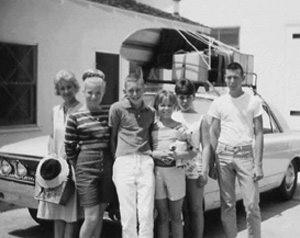Learning to surf a shapers view post 3
Learning to surf takes time, a boat load of repetition, the right height to weight ratio surfboard and a good attitude about knowing your limitations.
It really is possible to hurt yourself and others in the water when surfing… or attempting to surf. When I was in high school there was a guy that went with his dad to the Dewey Weber shop one day after school to buy a board. Picked one out and proceeded directly to the beach at Santa Monica to try the new board out. Took the board out, caught some white water and stood up. When he lost his balance he dove off the board into 2 feet of water, hit his head in the sand and broke his neck… true story, I was there and saw it happen.
So don’t be in a rush to go pro! I know first hand how pumped you can get about surfing. But the learning curve can be steep, take it one step at a time. The best surfers are relaxed in the water. Start out by attempting to stay relaxed and as you advance the relaxed attitude will be a part of all your sessions. As well, know your limitations.
Knowing your limitations is part of the judgment thing. This past few days we’ve had some pretty good sized surf….finally! Of the west north west swell variety. North west swells in Ventura bring on a heavy long shore current that sweeps down the point rapidly. The surf was to large and the currents to strong for the beginner or novice surfer. Even so, there were some beginners attempting to go out in conditions way beyond their abilities. What happens is they get swept down the beach in the surf zone and end up at the pier, where they can then get in a world of hurt, being swept through the pier, bounced off the pilings or worse, rapped around a piling and drown. It has happened.
My personal opinion is that beginners shouldn’t attempt going out if the surf is bigger than head high. So how do you judge the size of surf? If there are people out in the lineup watch to see what a wave looks like when someone is riding one. If when a rider is standing close to straight up and the wave is curling about where their head is then the wave is head high. It’s also a good idea to watch the surf for a good 10 to 20 minutes to see how far apart the sets are and if by chance when you first get to the beach there has been a long lull between sets and you just haven’t seen the bigger ones. Also if smaller waves that are breaking inside of the surfers in the line up and you don’t see anyone riding the smaller waves it’s most likely because the sets are bigger and the surfers in the water are out far enough so as not to get picked off by the larger waves when they come.
If you get to the beach and no one is out you can judge the size of the surf by perspective. Look for an object that you can tell is a certain size and try to project its image out into the surf zone. You can also walk out to the waters edge and get a pretty good idea of what size of surf is breaking by just watching the surf for 5 or 10 minuets.
Be smart, stay relaxed, think before you go. Develop and use good judgment. And as the life guards say in Hawaii…when in doubt, don’t go out.
D.R.






